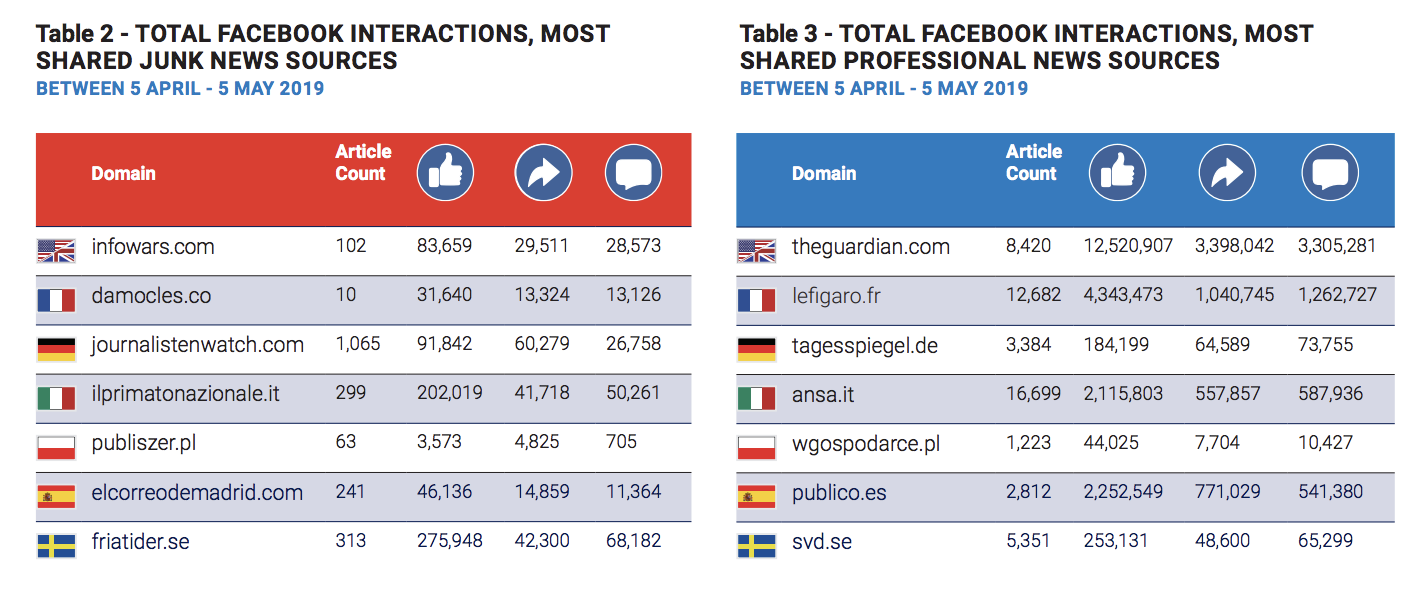As the U.S. media scrambles to do something different besides Youngstown, Ohio profiles of working class voters, the misinformation machines are alive and well in our neighbors across the pond.
A study of tweets and Facebook posts related to the European parliamentary elections found that misinformation and “junk news” still flourished on Facebook but seemed to be tamped down on Twitter, researchers at the University of Oxford’s Computational Propaganda Project found. Anti-immigration and Islamophobic writing especially took off.
Nahema Marchal, Bence Kollanyi, Lisa-Maria Neudert, and Philip N. Howard collected half a million tweets from April 5 to April 20 that used European election-related hashtags. They examined 137,000 of them which contained a URL that went to one of 5,774 unique news sources and determined that less than four percent of the sources were what they call “junk news.”
(Their definition: “Junk news sources deliberately publish misleading, deceptive or incorrect information purporting to be real news about politics, economics or culture. This content includes ideologically extreme, hyper-partisan, or conspiratorial news and information, as well as various forms of propaganda.” We should note that how these researchers define “junk” has been controversial in the past, with relatively mainstream U.S. outlets like the New York Daily News and National Review having been so categorized in past research.)
Junk news was a small share of the total in all of the countries studied except for Poland, where 21 percent of traffic came from junk news — more than the share from mainstream news sources.

On Facebook, “while many more users interact with mainstream content overall, individual junk news stories can still hugely outperform even the best, most important professionally produced stories, drawing as much as four times the volume of shares, likes, and comments,” the researchers found. They used the NewsWhip dashboard to compare the five most popular sources of junk news and the five most popular professional news sources from each language sphere from April 5 to May 5.
“While junk news sites were less prolific publishers than professional news producers, their stories tend to be much more engaging,” the researchers wrote. “Indeed, in five out of the seven languages (English, French, German, Spanish, and Swedish), individual stories from popular junk news outlets received on average between 1.2 to 4 times as many likes, comments, and shares than stories from professional media sources.”

And here are the themes that resonated the most with audiences across the Oxford researchers’ sample:

The full study is available here.
Leave a comment